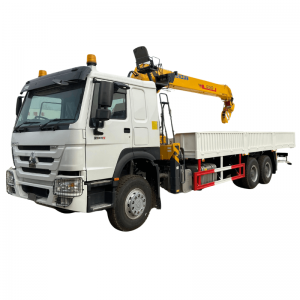Revolutionizing Waste Management The Ultimate Guide to Garbage Compactor Trucks with High-Tech Features

Introduction:
Waste management is a critical aspect of urban infrastructure, and the role of garbage compactor trucks cannot be overstated in keeping our cities clean and hygienic. These vehicles are essential for collecting and compacting waste efficiently, making it easier to transport and dispose of garbage in a sustainable manner. In recent years, advancements in technology have revolutionized the design and functionality of garbage compactor trucks, introducing a range of high-tech features that enhance their performance and efficiency. This article explores the evolution of garbage compactor trucks, the benefits of incorporating high-tech features, and the latest innovations in waste management technology.
Evolution of Garbage Compactor Trucks:
Garbage compactor trucks, also known as refuse trucks or trash compactors, have been an integral part of waste management systems for decades. These specialized vehicles are equipped with compactors that compress waste materials to reduce their volume, allowing for more efficient collection and disposal. The earliest compactor trucks were simple in design, consisting of a hopper for loading waste, a compactor mechanism, and a storage compartment for compacted waste.
Over time, the design and functionality of garbage compactor trucks have evolved significantly to meet the increasing demands of urban waste management. Modern compactor trucks are equipped with hydraulic systems for more efficient compaction, larger storage capacities to accommodate higher volumes of waste, and improved safety features to protect workers and the environment. However, the most significant advancements in garbage compactor trucks have come in the form of high-tech features that enhance their performance and sustainability.

Benefits of High-Tech Features in Garbage Compactor Trucks:
The incorporation of high-tech features in garbage compactor trucks offers a wide range of benefits for waste management operations, municipalities, and the environment. These advanced technologies improve the efficiency, safety, and sustainability of waste collection and disposal processes, ultimately leading to cleaner and healthier cities. Some of the key benefits of high-tech features in garbage compactor trucks include:
1. Improved Efficiency: High-tech features such as automated loading systems, route optimization software, and real-time monitoring capabilities enhance the efficiency of waste collection operations. These technologies streamline the collection process, reduce turnaround times, and optimize routes to minimize fuel consumption and emissions.
2. Enhanced Safety: Safety is a top priority in waste management operations, and high-tech features play a crucial role in ensuring the well-being of workers and the public. Advanced safety systems, such as collision avoidance sensors, rear-view cameras, and automatic braking systems, help prevent accidents and injuries during waste collection activities.
3. Environmental Sustainability: Garbage compactor trucks with high-tech features are designed to minimize their environmental impact and promote sustainability. Features like low-emission engines, energy-efficient components, and alternative fuel options reduce greenhouse gas emissions, noise pollution, and fuel consumption, contributing to a cleaner and greener environment.
4. Data-driven Insights: High-tech garbage compactor trucks are equipped with sensors and telematics systems that collect valuable data on waste collection operations. This data can be used to analyze performance metrics, track efficiency levels, and identify areas for improvement, enabling municipalities to make data-driven decisions and optimize their waste management processes.
Latest Innovations in Waste Management Technology:
The field of waste management technology is continuously evolving, with new innovations and advancements reshaping the industry. Garbage compactor trucks are at the forefront of these technological developments, incorporating cutting-edge features and functionalities to improve their performance and sustainability. continue reading this.. of the latest innovations in waste management technology include:
1. Smart Waste Collection Systems: Smart waste collection systems use sensors, RFID tags, and IoT technology to monitor waste levels in bins and dumpsters in real-time. This data is used to optimize collection routes, reduce unnecessary pickups, and improve operational efficiency. Garbage compactor trucks equipped with smart waste collection systems can prioritize collection based on fill levels, leading to more efficient and cost-effective waste management.
2. Autonomous Garbage Compactor Trucks: Autonomous or self-driving garbage compactor trucks are equipped with AI-driven systems that enable them to navigate streets, collect waste, and compact trash without human intervention. These vehicles use a combination of sensors, cameras, and algorithms to detect obstacles, avoid collisions, and optimize collection routes. Autonomous garbage compactor trucks offer the potential to revolutionize waste management operations by increasing efficiency, reducing labor costs, and improving safety.
3. Energy-Efficient Hybrid Engines: Garbage compactor trucks are notorious for their high fuel consumption and emissions, but advancements in engine technology are addressing these environmental concerns. Hybrid engines, which combine traditional combustion engines with electric motors, offer improved fuel efficiency, reduced emissions, and lower operating costs. Garbage compactor trucks equipped with energy-efficient hybrid engines help municipalities meet sustainability goals and reduce their carbon footprint.
4. Waste Separation and Recycling Systems: To promote recycling and reduce landfill waste, some garbage compactor trucks are now equipped with onboard waste separation and recycling systems. These systems automatically sort recyclable materials from general waste during the collection process, facilitating the recycling of paper, plastic, glass, and metal. By separating waste at the source, garbage compactor trucks with recycling systems help municipalities achieve higher recycling rates and reduce the amount of waste sent to landfills.
Conclusion:
Garbage compactor trucks with high-tech features are transforming the landscape of waste management, offering innovative solutions to the challenges of urban sanitation. These advanced vehicles improve efficiency, enhance safety, and promote sustainability in waste collection and disposal operations, making our cities cleaner and more livable. As technology continues to evolve, we can expect to see further innovations in garbage compactor trucks that will revolutionize waste management practices and contribute to a more sustainable future. By embracing high-tech features and cutting-edge technologies, municipalities can optimize their waste management processes, reduce environmental impact, and create healthier communities for generations to come.
